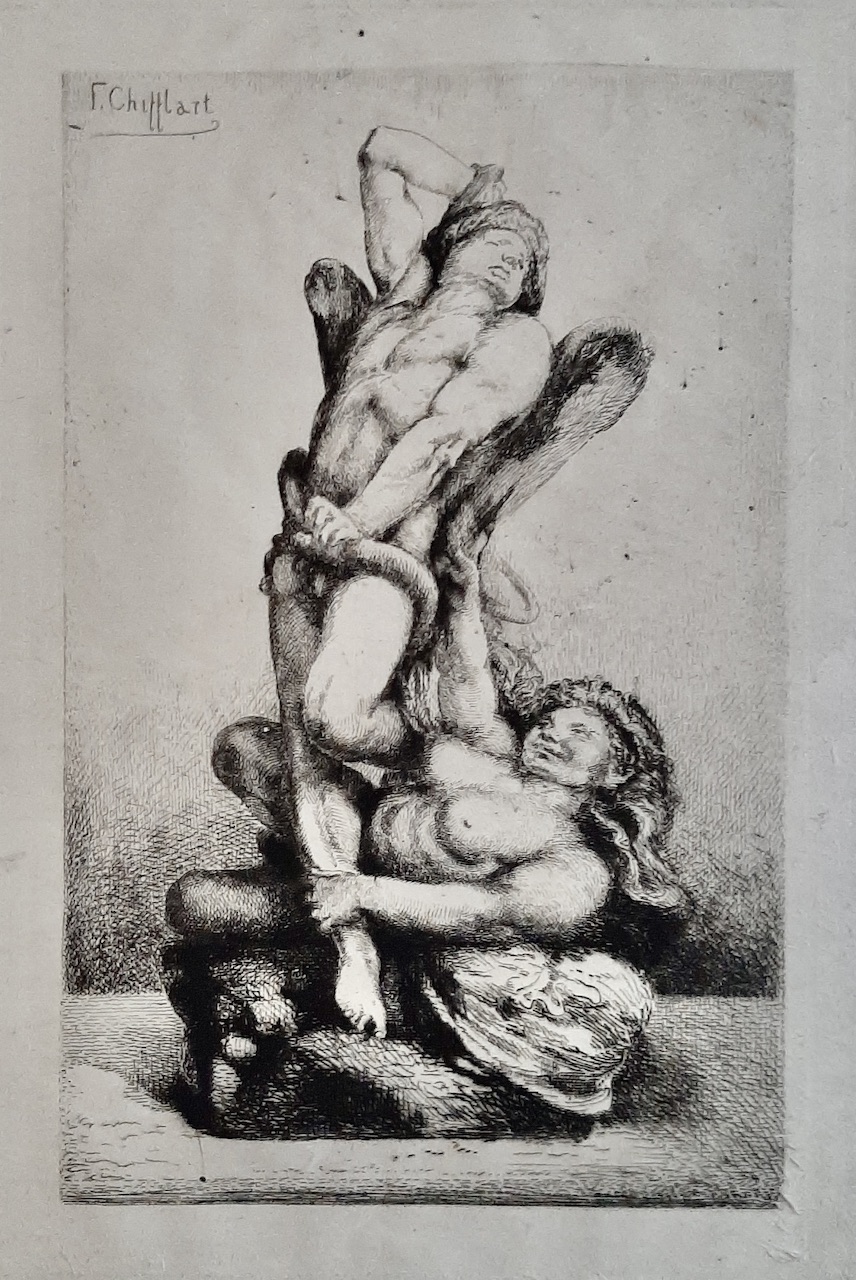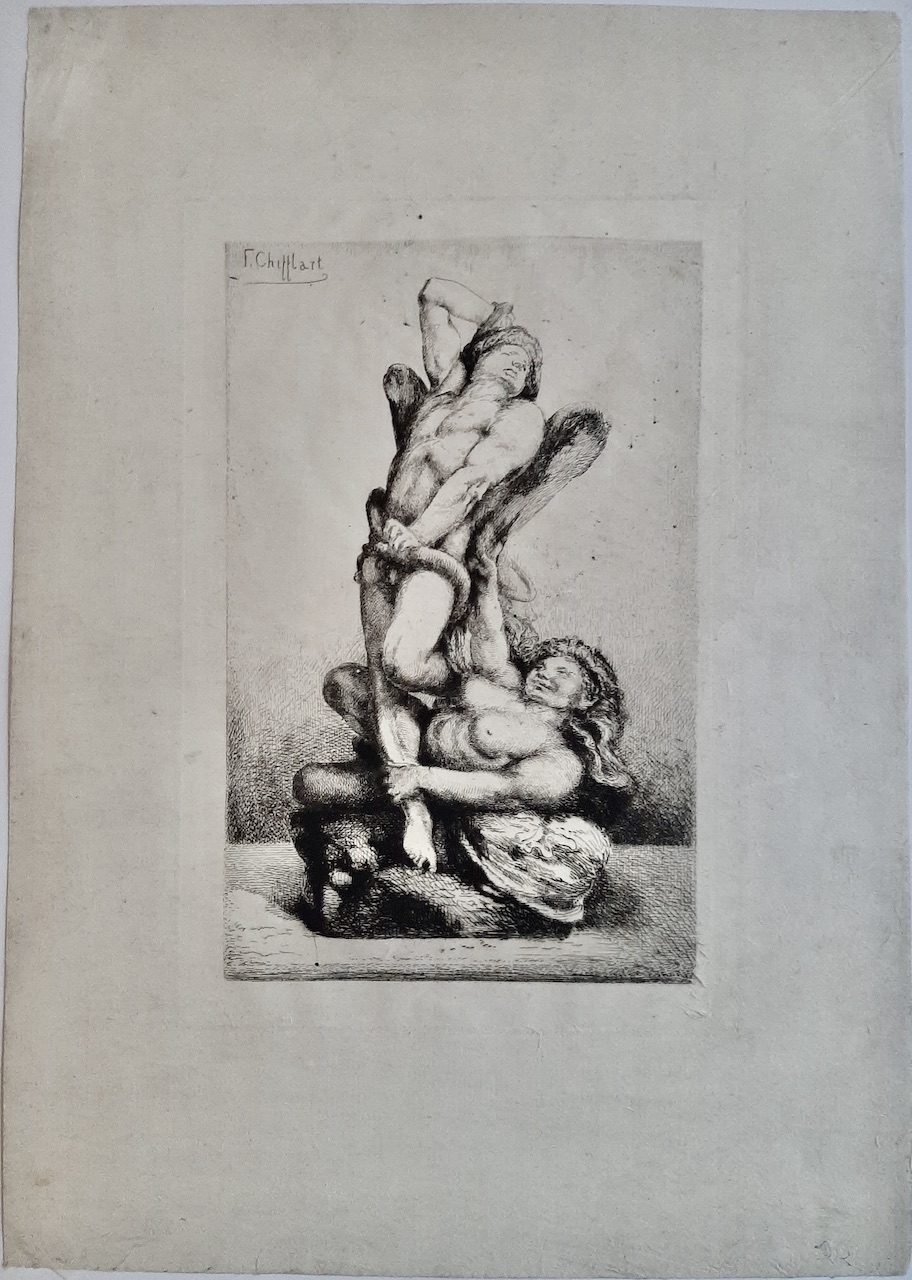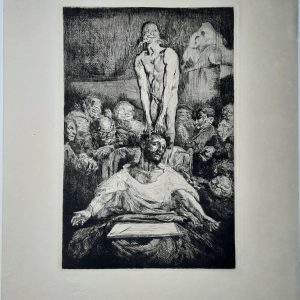Description
Nicolas-François Chifflart (Saint-Omer, 1825 – Paris, 1901)
The Links of the Evil
For another print by N.-F. Chifflart, please clic here
Nicolas Chifflart links evil : Original etching and drypoint, 1875
Proof on laid paper. Dimensions of the sheet : H. 448 mm x W. 320 mm – Dimensions of the plate : H. 293 mm x W. 197 mm.
Condition : slight rubbing of the paper on about two centimeters towards the bottom of the subject on the right without harming it.
Nicolas Chifflart links evil : Nicolas-François Chifflart was born in Saint-Omer on March 21, 1825 and died in Paris on March 20, 1901. He is a French painter, draftsman and engraver. He is known among others for having illustrated the work of Victor Hugo.
François-Nicolas Chifflart is the son of Antoine-Omer Chifflart, locksmith in Saint-Omer. It is at the sides of this last one that it is initiated with the engraving on metals. He is moreover, noticed for his talents of engraver-cutter and hired by Louis Fiolet. Fiolet is the most important manufacturer of earthenware pipes in the city. His sister Célonie Sophie married Alfred Cadart in 1855. On his advice, he started publishing prints in Paris.
He began to draw at a very young age at the municipal school of drawing in Saint-Omer. In 1844, he entered the École des Beaux-Arts in Paris in the studio of Léon Cogniet. Chifflart was awarded the first Grand Prix de Rome for historical painting in 1851 with “Pericles at the deathbed of his son”. This artist is probably the only winner of the Prix de Rome in the 19th century who did not have a real academic career. Originally from Saint-Omer, where his father was a locksmith, he was introduced to the art of engraving very early on. Convinced of his talent, he went to Paris to join Léon Cogniet’s workshop at the École des Beaux-Arts in 1844. The following year, he presented two paintings at the Salon. In 1846, the works he chose to exhibit were marked by the influence of Daumier and the realist movement that emerged at the end of Louis-Philippe’s reign. After winning the Grand Prix de peinture in 1851, Chifflart went to Italy like all the other winners. Upon his return, his open opposition to academicism, his clearly stated political choices and his low regard for the Emperor closed the doors to official commissions. In a very precarious situation, the artist turned to engraving and survived thanks to the support of his brother-in-law, Alfred Cadart, who was a printer. His moral commitments and his inner revolt found their full expression in his friendship with Victor Hugo, for whom he illustrated Les Travailleurs de la mer.
His engravings for Faust, exhibited at the 1859 Salon, were admired by Baudelaire and Théophile Gautier; the former was enthusiastic about his technique, “miracle, he has an originality” he wrote then, sensing his talent. The same year, his brother-in-law, Alfred Cadart, published a photographic album signed Robert Jefferson Bingham, reproducing his first engravings. From 1862 to 1867, he took advantage of the engraving workshop in the rue de Richelieu set up by Alfred Cadart and the Société des aquafortistes, of which he was a member from the start: he produced more than 200 etchings, until 1882 (he stopped engraving after this date), with his own sister, who had meanwhile become the Widow Cadart, and who had continued the engraving activity. During this fruitful period, he produced the album Improvisations sur cuivre containing fifteen plates and a frontispiece. He then met Victor Hugo, who judged his work “truly beautiful and grandiose”, and he began a new career as an illustrator with him with Les Travailleurs de la Mer (1869 edition), engraved by Fortuné Méaulle, and Notre-Dame de Paris. In total, he illustrated most of the works and even the posthumous editions. His engravings have a style considered disconcerting, fantastic and powerful, which one assimilates to the late black romanticism. François Chifflart died in Paris on March 20, 1901 (Wikipedia for part)




Reviews
There are no reviews yet.